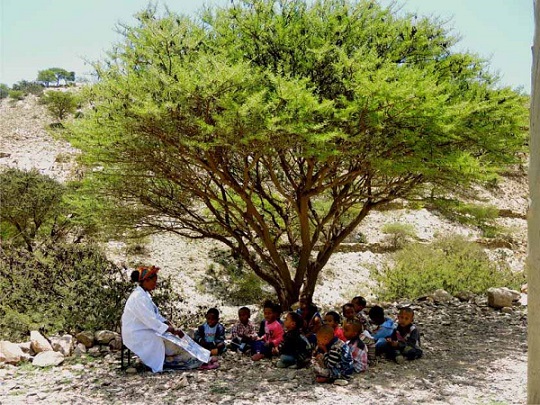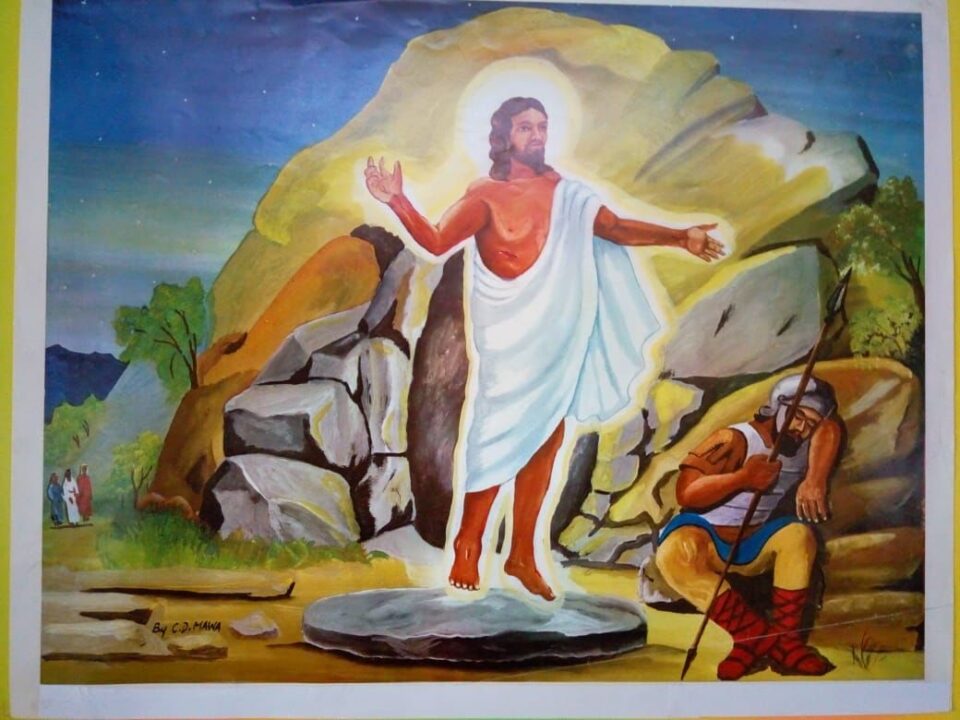- Contact us on - Contactez-nous sur - Contacte-nos em
- +233-30-277-8867/8
- +233-30-277-2548
- secam@secam.org
St. Louis Sisters' Mission in Rural Ethiopia Has Adventures, Challenges, and Beauty
St. Louis Sisters’ Mission in Rural Ethiopia Has Adventures, Challenges, and Beauty
Global Sisters Report (GSR) || By Melanie Lidman || 25 August 2016
 « The St. Louis Sisters in Africa are booming with vocations and we could afford to expand, but instead of going to Europe, [we’re doing] as the Gospel said: Go to the ends of the world, » Sr. Justina Ihechere proclaims.
« The St. Louis Sisters in Africa are booming with vocations and we could afford to expand, but instead of going to Europe, [we’re doing] as the Gospel said: Go to the ends of the world, » Sr. Justina Ihechere proclaims.
She pauses for a moment and looks out of the windows from her new mission in Dawhan, northern Ethiopia. In every direction, jagged mountains pierce the sky, scraggly brush barely clinging to the steep pitches. In the village below, mud houses are clustered together on the only flat plots available.
Dawhan is located just 15 minutes south of the Eritrean border, and the only connection to the rest of the world is a dirt road winding up and down the mountainsides. Every morning, a troop of Ethiopian soldiers patrols along this road to search for Eritrean infiltrators, a remnant from the devastating Ethiopian-Eritrean war from 1998 to 2000.
The Dawhan mission is more than an hour from a paved road and three hours from the closest large town. In the northwestern part of Ethiopia, the mountains are sprinkled with tiny villages, filled with farmers trying to coax sprouts of barley and teff (a local grain) from the rocky mountain ridges. It is in this place that three St. Louis Sisters, two from Nigeria and one from Ghana, are making their new home.
The popular story in the international media is that the Catholic Church is shrinking, losing vocations and packing up parishes. But as religious life grows at unprecedented rates in Africa, some congregations are expanding to new locations.
The St. Louis Sisters, after a long soul-searching process, decided to start a remote outpost in northern Ethiopia. They arrived on Sept. 19, 2013, not quite sure what they would find. The start of a new mission has had challenges, obstacles, frustrations, more than a few stomach issues, as well as touching moments of love and community. Three sisters who founded the mission look back on their difficult first three years and the adventure of starting a new mission in the middle of nowhere.
‘In West Africa, we don’t have mountains like this!’
Sr. Ijanada Emmanuel remembers the first time the three sisters drove out to their new home in Dawhan. It was a difficult, though exciting day. First, they were exhausted. They’d arrived at the airport in Mekele, the largest city in northern Ethiopia, late the night before and set out to the village at 5 a.m. with at least a five-hour drive ahead.
« I couldn’t even imagine these mountains, going in, » says Emmanuel, who is from northern Nigeria. While the other people in her car chatted away, Emmanuel was mute with shock and fear, as the road wound precipitously close to the edges of steep mountainsides. Everything was rushed as they tried to reach the church, where the entire community was waiting to welcome them with dances and prayers. (Watch the welcome procession here.)
Second, the sisters were starving.
« They gave us meat, and for them to give us meat, it was a big thing, » says Ihechere, also from Nigeria. « But we weren’t ready for eating from the communal bowl. It was good if we knew, but it was a shock, you can imagine! »
« Then for supper, injera, oh my God, » remembers Ihechere. Injera is the Ethiopian traditional flatbread, made from fermented teff grains and served at almost every meal. The bread is very nutritious, high in iron and calcium, but the slightly sour taste can take some getting used to.
« The injera was cold as a dog’s nose! » Ihechere says. « We were able to eat bread. We couldn’t eat the injera; my stomach could not take it. »
« The shock and everything about it was just, I can’t even express it, » says Sr. Benedicta Boakye-Yiadom, from Ghana, as she recalled the first week in Dawhan. « Our first Sunday when we went to Mass, we took our Sunday missals with us. They started chanting, and I said, ‘Oh, OK, after the chanting we’ll be able to follow.’ They came and read in Tigrinya. I couldn’t follow the head or the tail of anything. I was in total shock. »
« I was expecting that the Catholic Church is the same; even if you don’t have the language, you should be able to follow the sequence, » Boakye-Yiadom says.
The Ethiopian Catholic church is unique in having two rites — Latin rites and Ethiopian Coptic rites. Ethiopian rites have a very different service structure than Latin Masses and use both local languages as well as Ge’ez, the Ethiopian holy language. Although both are considered Catholic, Ethiopians who grew up practicing Latin rite say they also get lost switching to Ethiopian rite, and vice versa.
« When we went to our first Mass, we came home and we said, ‘Did we just go to Mass?’ » Emmanuel says. She can laugh about the memory now. « The first Sunday, it was not funny. Our leadership sat in front of us, and they didn’t look behind them. They had already been there, so they knew what was coming, but we had no idea. »
« Even [the leadership] who came for the feasibility studies, they hadn’t seen the tip of things, » says Ihechere. But now that she looks back on it, maybe that was a good thing.
« If they had seen everything, maybe we would have been discouraged, » she says. « The rites, the culture, the terrain, the mountains . . . in West Africa, we don’t have mountains like this! I never thought I’d be able to drive on a road like this. Maybe it was providence that they didn’t know themselves. »
Read more…
Source: Global Sisters Report…

